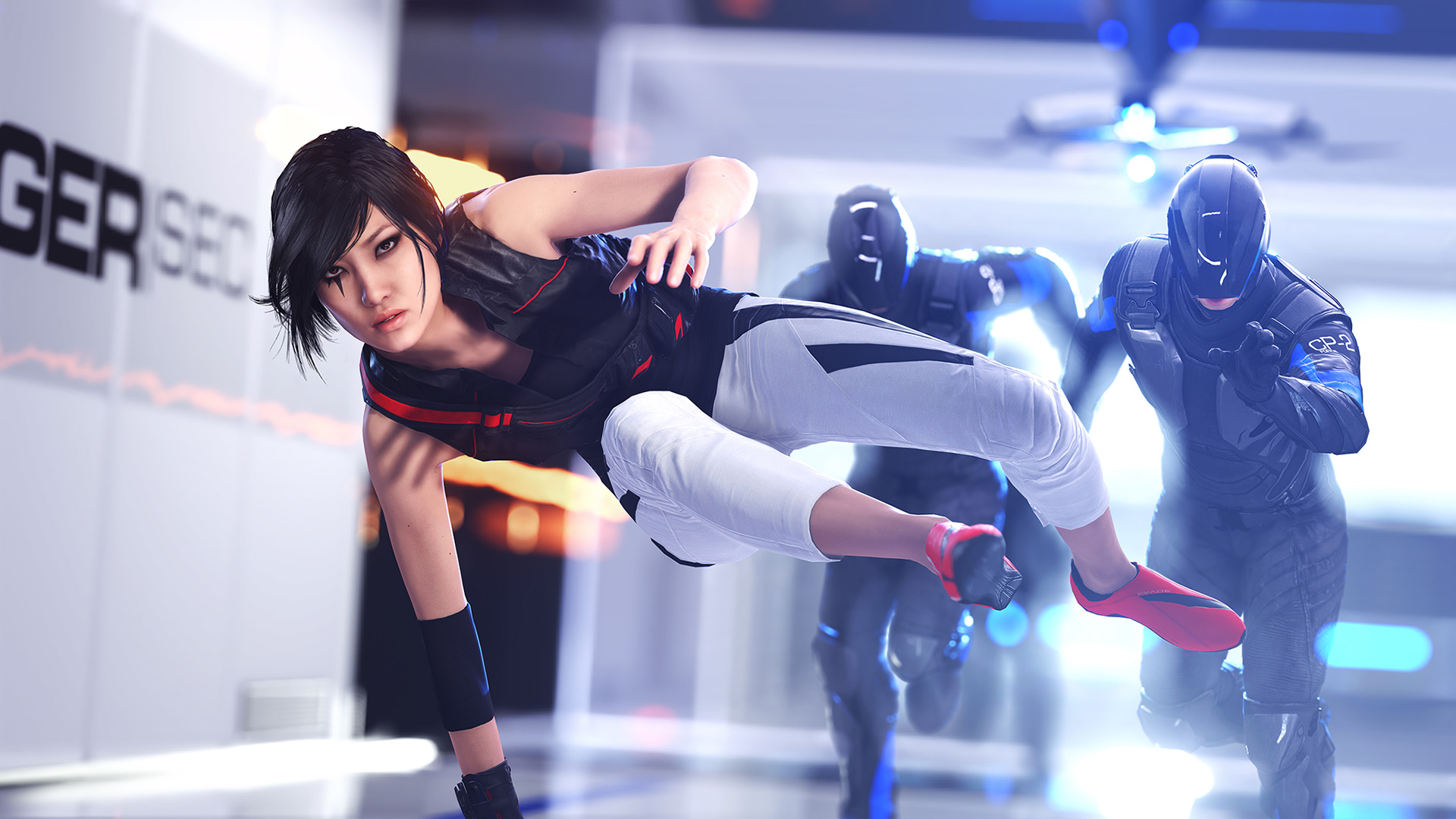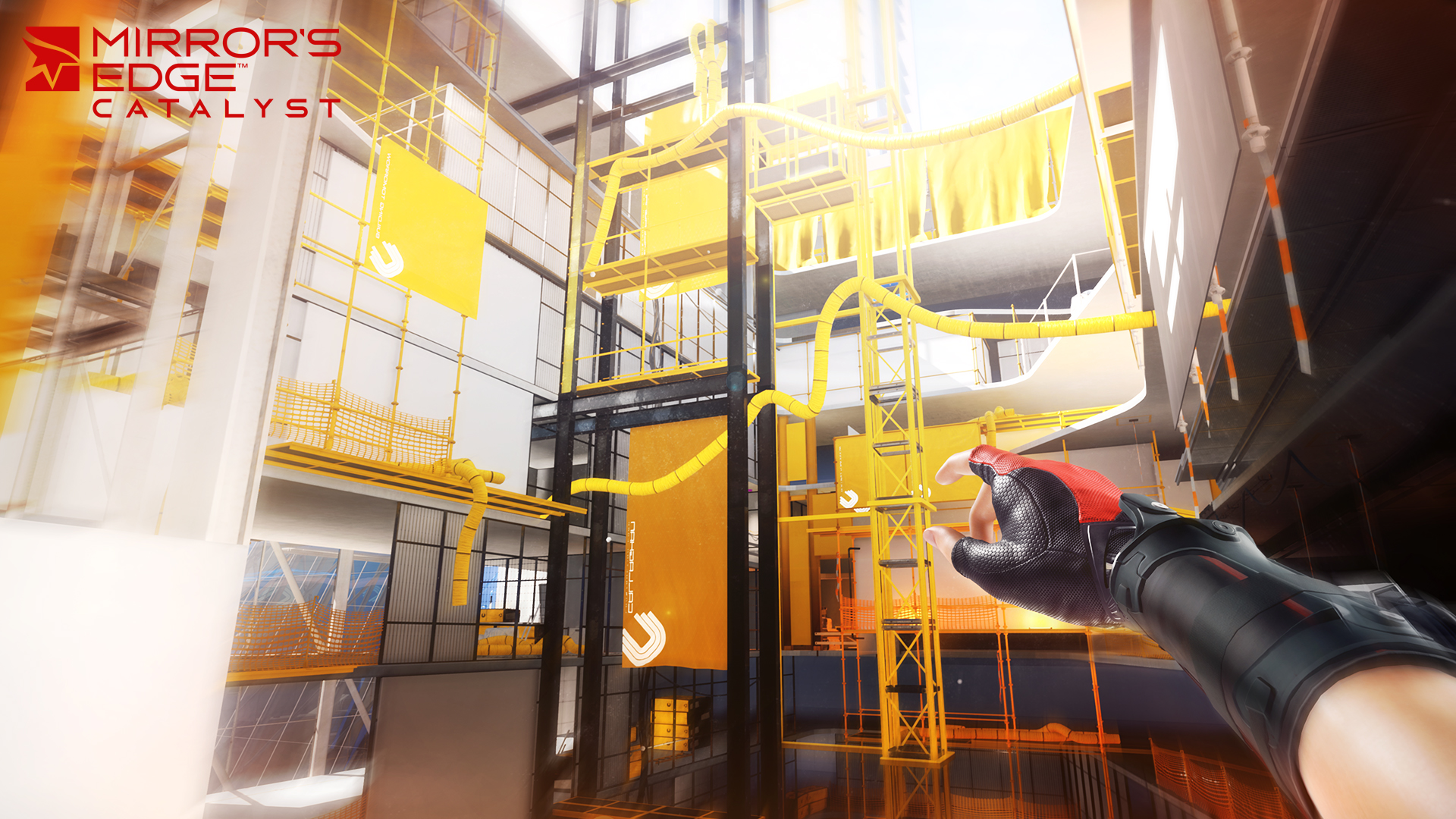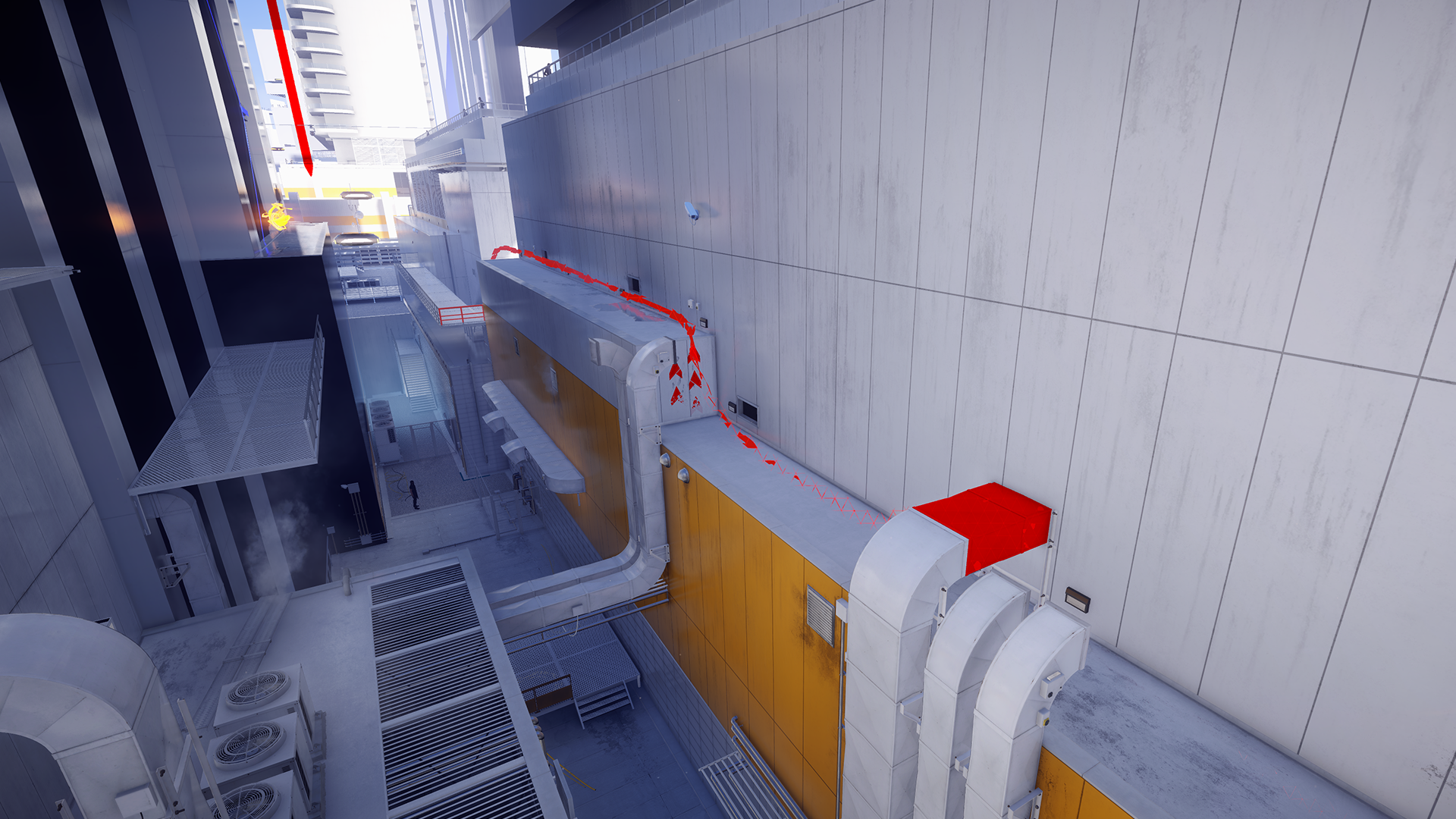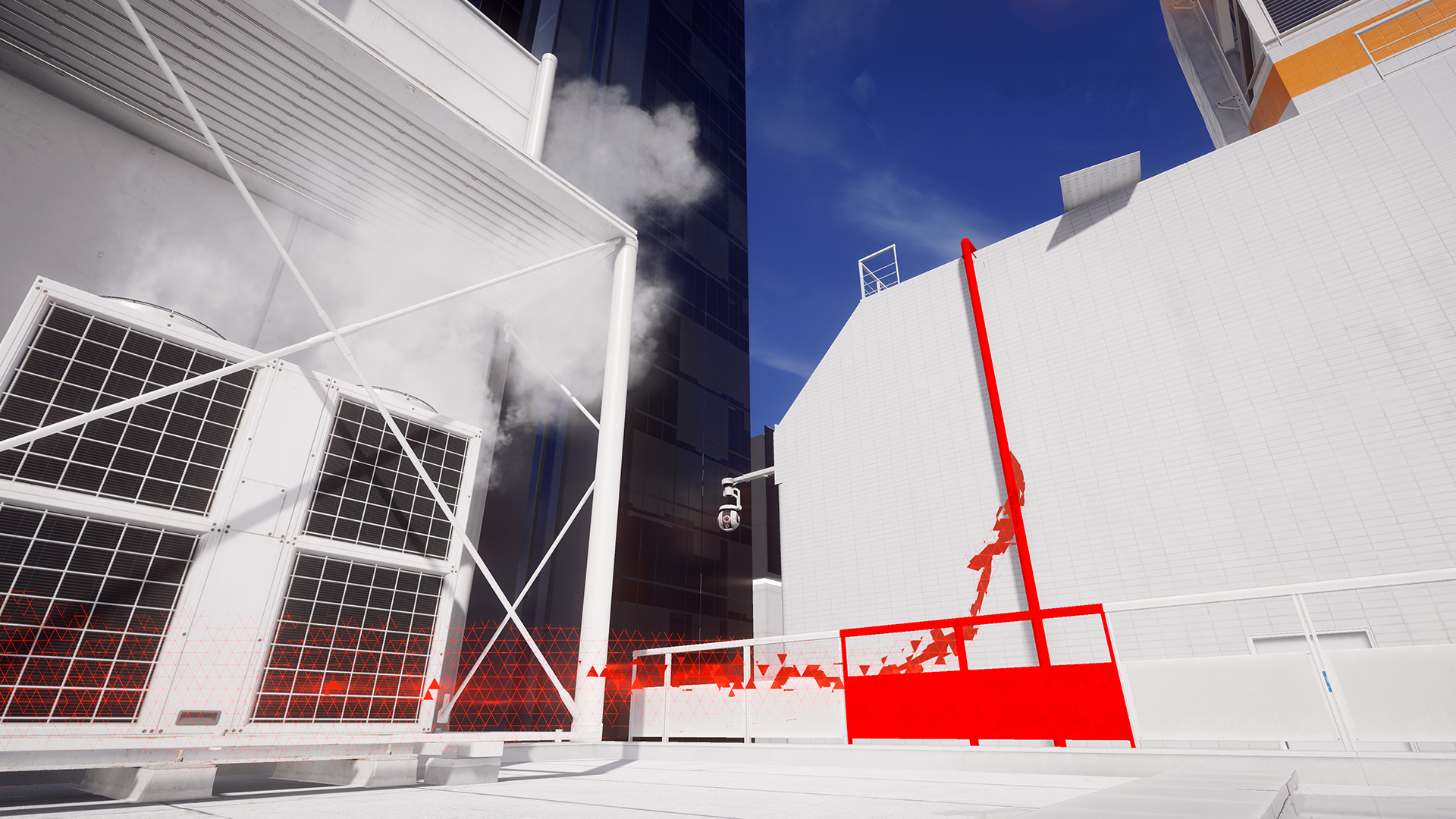Mirror's Edge Catalyst hands-on: faithful yet improved

For almost eight years we’ve lived in a world with near-infinite Assassin’s Creeds but just one Mirror’s Edge. What’s fair about that? The series with free-running that’s almost entirely automated with one button becomes a runaway success, while the far more intricate, complex alternative doesn’t get a second look. Thankfully for fans of the series, digital sales and speedrunners have kept Mirror’s Edge alive, and what we have in Catalyst is a sequel that feels more like what the first game should’ve been than a follow-up in the traditional sense.
Reflecting on my three or so hours of playing Catalyst, it feels like DICE has started again with the same ideas. What if that intricate first-person platforming, which has been retained here in its entirety, was brought to an open-world playground, and introduced in a fashion that didn’t scare newbies away with its complexity? Catalyst shows that DICE is confident in what the original Mirror’s Edge was about, and instead tweaks what didn’t entirely work about that game, mostly the combat and the story. The open world has a substantial effect on the pace of the game. Missions take place seamlessly within the same gigantic environment, and you’ll find yourself running over the same places frequently but searching out new routes along the way. It’s a better framework for the ideas behind Mirror’s Edge.

It will feel very familiar to play for series fans. You run up walls, hop over small obstacles and slide under others, all the while trying to maintain Faith's momentum. What’s different is that some of the abilities you started with in the first game, like twisting 180 degrees instantly, or lifting Faith’s legs mid-jump to get over an object faster, or the wonderfully satisfying last-second saving roll during a big fall are all unlocked as upgrades. This has the effect of not forcing the player to learn too much at once, letting them get to grips with the platforming’s many elements individually, before feeding more in to be learned. If you’re an amateur, you’ve got an easier way into the game, and if you’re an expert, it only takes about an hour to progress Faith to where she was in the original anyway.
I ask producer Amo Mostofi about how new player-focused this upgrades idea is. “As we re-evaluated the entire game, we knew there were things we needed to improve from the first game. And certainly the player on-boarding, and teaching new players the ropes, we had to look at quite seriously. So that is part of that thinking – to put it into a skill tree where people could unlock them early on, they could essentially learn how to use those skills. They didn't have to learn it by themselves and discover it, it was more a case of showcasing that it's here, you can unlock it.”

The opening area of Catalyst is a lot like the early city exteriors of the first game. DICE isn’t saying how big the overall map is, but they’ve shown off other locations with different colour palettes, and when I play around with the menu screen map I can set waypoints for buildings that are miles away. Based on how expansive the map is, I’d estimate this is about one quarter or one fifth of the total playing space, and there’s more than enough in this one zone to support 3-4 hours of the story, along with potentially infinite amounts of time tinkering with the game’s new user-generated time trials. More about that later.
What’s encouraging as a big fan of the original—I finished it six times, including once on hard and another without firing a bullet—is how much my muscle memory for performing perfect runs across rooftops helps me get to grips with Catalyst. DICE is clearly proud of the experience of freerunning that the series has established, and has instead turned its focus to other areas. I'm delighted it still feels like the Mirror's Edge I know so well.
There are no guns this time, though. Well, no guns you can fire, anyway—enemies carry them, but the melee combat has been revamped so there are two variants depending on whether you’re sprinting or in close quarters. If you’re bombing through a level at full pace (measured by a bar on the HUD), Faith can instantly knock guards out with one punch, which feels fantastic, though you’re not always in a position to achieve this if you find yourself in a more enclosed space with multiple guards. In this case, you use kicks to make enemies fall into other guards, and can dodge their attacks in any direction by using a really satisfying shift maneuver.
Keep up to date with the most important stories and the best deals, as picked by the PC Gamer team.

In using this dodge move, you’re circling enemies before moving in for the knockout blow. It's a more tactical, detailed melee system. Faith can kick enemies in whatever direction you like—knocking one off a building to their deaths feels particularly heroic (hey, they decided to support an absurdly shiny dystopia, not me). Melee combat becomes about managing enemy positioning than the more simple disarming/sliding kick fighting did in the first game, and I’m very fond of how empowering it feels. They’ve clearly thought long and hard about how to make these encounters interesting even if you’re not on the run. It has the effect of making the combat feel nearly as complete as the platforming, though you'll still spend the vast majority of your time with the latter—combat feels like it's deployed as a change of pace to me, like in the first game.
“We looked at a number of solutions [for combat], and what made the most sense was using what's strong about Mirror's Edge, and that's the movement, and building Faith's ability to fight into her movement system,” Mostofi says. “So now instead of disarming someone using their weapon, you're using Faith as a projectile.” The team at DICE knew that wouldn’t be quite enough to sustain a campaign in Catalyst, however. “Bursting through people? That's tremendous fun, but you don't want to do it for the whole game. So having that variety in the combat was really important, so the shift move that you can use to strafe around people, or pull back, double tap on shift, get a bit of situational awareness. Space between you and the enemy. All of that is something you can build a bit of tactics in for the player.”

Better combat and an open world give Catalyst a winning hand, I think. This free-roaming environment works for me not just as a space to explore, but as the perfect foundation for the online user-generated challenges that DICE has plugged into Mirror’s Edge. DICE has designed rooftop environments that are meant to be ran across from all directions, a series of interlocking routes of platforms, climbing pipes, big jumps and potential wallruns. It’s really something, and clearly must’ve been a challenge for the team to make compared to the linear levels from the first game. The complexity of it really becomes clear when you start making your own time trial challenges, which can be shared both publicly and with a specific group of friends.
Players run the route they want to set and drop time trial markers along the way. After you set the last marker, you’re taken back to the finish line where you can run the route and set the first score on the leaderboard. You’ll be able to name them in the finished game—I created one that had a couple of big walls to hop over and ended in a wallrun with a drop that would kill players if they didn’t perform a last-minute roll. In the finished game, I plan on recreating this, tweaking it a little and calling it the Deathbringer.
When other players beat the time on my own course, it was like finding out my bastard of a son had surpassed me. I then followed the leader's ghost through the course and figured out specific changes to my run that sliced milliseconds off the time and reclaimed the top spot. When I reached number one in someone else's race, it was like inventing a wonderful new way to hurt their feelings.
This adds potentially unlimited playing time to Catalyst, and is one of the most welcome improvements to the original. The map is scattered with these online challenges, sorted in popularity by an algorithm. If you’re not keen on seeing loads of icons on the map, though, and just fancy an isolated, distraction-free run through the story—which I might do the first time through the story, in all honesty—you can play offline and turn it all off. In these community challenges, I can see a Mirror’s Edge follow-up that’s truly built for the modern age. The leaderboard-obsessed should be able to play this forever. The only question is how much open world there is to explore, and whether jogging through the same spaces will eventually get tired or not.

I’m rather taken with Catalyst, then, but there is one area DICE has clearly tried to improve that I’m really struggling to like. I’m sad to say that the story here has not grabbed me, despite gorgeously presented and well-acted cutscenes replacing the dry animated sequences of the original. I’ve always felt that Mirror’s Edge has such superior art direction that no scripted narrative could match the strangeness of that impossibly clean, eerily static city. I think there’s a genuine power in that ambiguity that a generic dystopian storyline can only take away from.
In Catalyst, Faith’s met by a series of trendy-looking guys with hoodies or nice haircuts handing out objectives, along with occasional ominous talk about a man Faith owes money to called Dogen (which is uncomfortably close to the old ‘doge’ meme for my liking), and a number of factions and corporations. It still feels like waffle to me, but it’s possible I went in with my own preconceptions about Mirror’s Edge games having bad stories that ended up being something of a self-fulfilling prophecy. Then again, there’s not a single other element about Catalyst I found myself disappointed by.
What’s at least interesting about the story from a series perspective is that they’re deliberately building a lore that can be used for future games—suggesting we’re living in a reality where another Mirror’s Edge could be on the cards if this one is a success. “We've always wanted to have a great story, and part of that is because we hope to have something, an IP in the future where we can build on this story,” Mostofi says. I hope they get to tell it, because I don’t want to wait another seven-and-a-half years for a new Mirror’s Edge. And I don’t think DICE wants to wait that long either. They keep describing Catalyst as a passion project, like the original was—it’s not necessarily a commercial slam dunk like Battlefield or Battlefront are.
The first game was a true original, and Catalyst is a refined version of that, built for the modern age. I’m unsure whether it can truly win over fans who bounced off the original, but the attempts to ease them into learning Faith’s intricate skillset can only help. For those who truly loved Mirror’s Edge the first time around, they should feel right at home.


